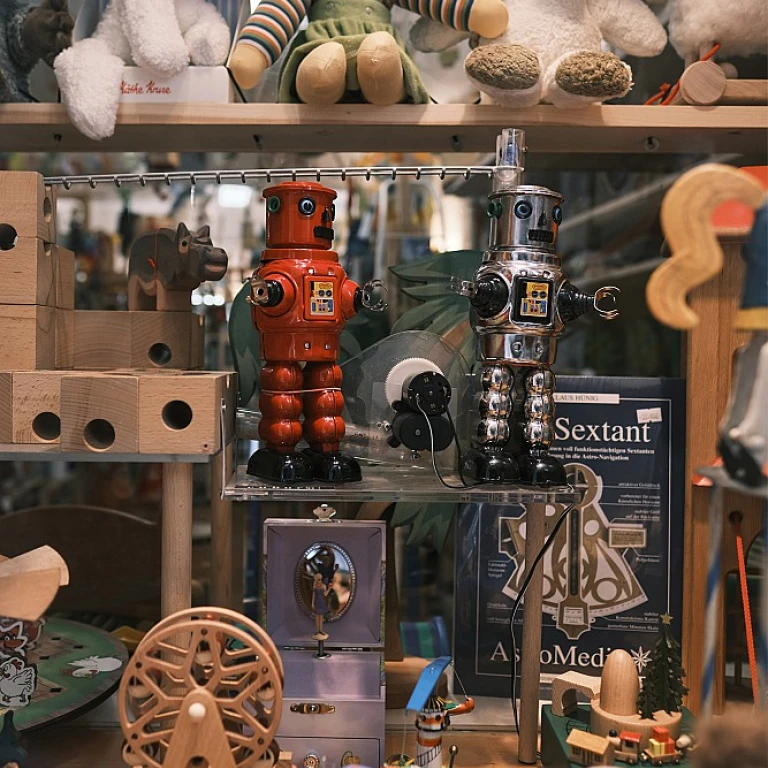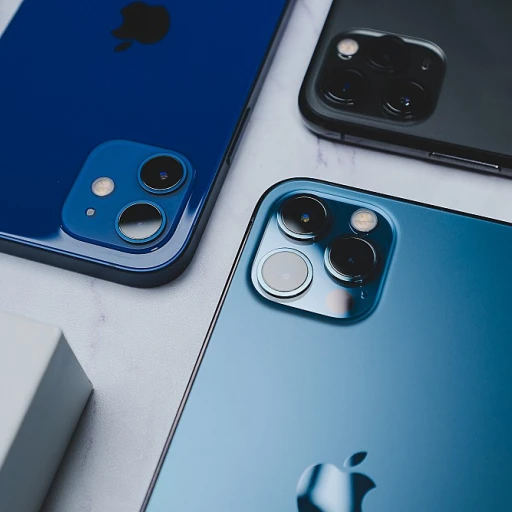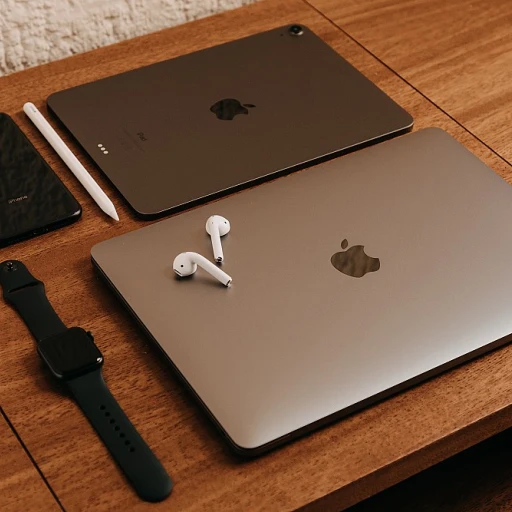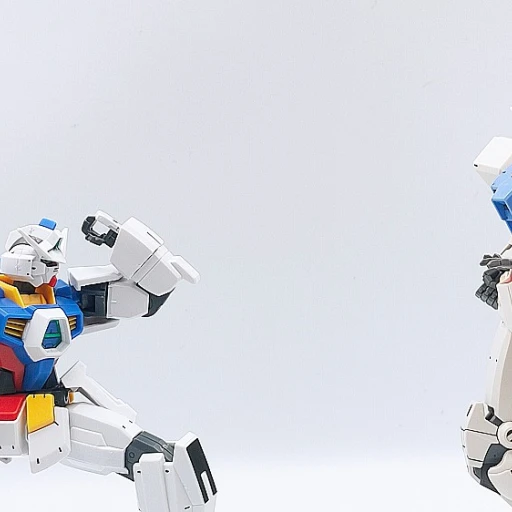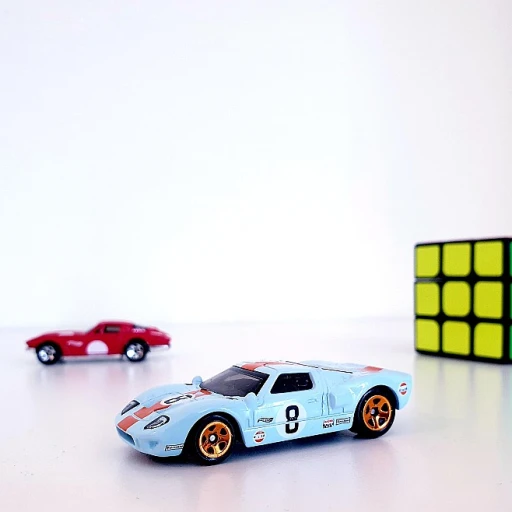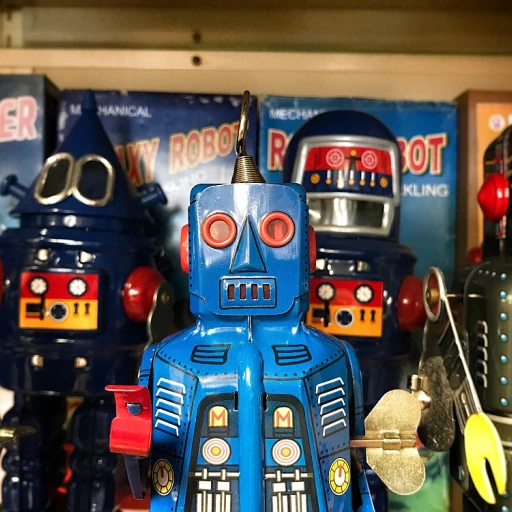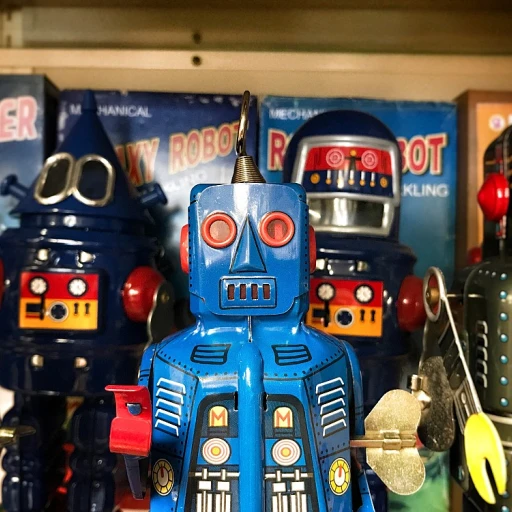The cultural significance of the chinese tea set
Spirituality within a cup
When one thinks of Chinese culture, the elegance of the Chinese tea set inevitably comes to mind. This isn't just a luxurious object but a conduit of history, values, and art. The traditional tea set, used in China for centuries, embodies the cultural richness and the deep-seated practices of Chinese society.
The soul of ceremonies
Tea is integral to Chinese life. It represents everything from social classes to philosophical dialogues and religious rites. These tea sets, particularly porcelain and yixing clay sets, have been at the heart of numerous ceremonies, reflecting a microcosm of Chinese life. As an emblem of heritage, they are often handed down through generations as treasured heirlooms.
Craftsmanship: A respected art
The creation of a Chinese tea set is anything but mundane. Each porcelain tea cup or yixing teapot requires the profound skills of the artisans in Jingdezhen, the 'Porcelain Capital' of China. Skilled craftsmen spend years perfecting this art, achieving mastery noted by experts like ceramic artist Chen Hanming. This meticulous process results in functional yet exquisite artifacts, each resonating with its own story and essence of the culture.
Ancient traditions live on
The Gongfu tea ceremony—an elaborate ritual of precision—epitomizes how deeply ingrained tea culture is within the Chinese society. This ceremony is often performed using specific Gongfu tea sets made from materials like purple clay or porcelain. Although ancient, these practices comtinue to adapt to modern times. An elegant Chinese tea set from Suntory or Wedgwood is not just a beverage tool but a continuation of a millennia-old tradition.
Moving beyond function
In today’s homes, a Chinese tea set is no longer just about furnishing daily tea. It has transcended to become a statement piece—a nod to taste, culture, and exclusivity. Modern enthusiasts are now incorporating exquisite ceramic tea sets or elegant glass teapots into their kitchen decor to evoke a sense of peace and tradition.
Materials and craftsmanship in chinese tea sets
Porcelain - A Symbol of Elegance and Purity
Porcelain has always been synonymous with elegance in the world of chinese tea sets. Known for its delicate beauty and translucency, porcelain tea sets are often adorned with intricate designs and motifs inspired by nature. A famous example is the blue and white porcelain from Jingdezhen, a type celebrated globally.
The artisans in Jingdezhen have perfected their craft over centuries, creating masterpieces that are both functional and artistic. According to a report by The British Museum, Jingdezhen porcelain was so highly regarded that it was once reserved exclusively for the Chinese imperial court.
Porcelain tea sets are light, which makes them easy to handle. They are also non-porous, ensuring that the tea retains its original flavor and aroma. However, due to their delicate nature, porcelain tea sets require careful handling to avoid chips and cracks.
Yixing Clay - The Spirit of Gongfu Tea
On the other hand, Yixing clay tea sets are revered for their unique qualities, especially among those who practice the gongfu tea ceremony. Originating from the Yixing region in Jiangsu Province, Yixing clay teapots have a porous nature, allowing them to absorb the flavors of the tea. This enhances the tea-drinking experience over time as the teapot retains a memory of previous brews.
According to tea expert Thomas Yan, “A well-seasoned Yixing teapot can produce a profoundly richer cup of tea, making each brewing session unique.”
Yixing clay teapots are typically handmade, each one reflecting the artisan's touch. The clay used, known as zisha or purple clay, is prized for its ability to withstand high temperatures and its porous nature, which complements the artistry of the gongfu tea ceremony.
Glass Tea Sets - Modern Sophistication
In recent years, glass tea sets have gained popularity for their modern appeal and practicality. These sets allow tea enthusiasts to appreciate the color and clarity of their tea, which is especially important for green and white tea varieties. The transparency of glass complements the visual aspect of the tea ceremony, enhancing the overall experience.
Brands like Simax and Heat Resistant Glass, acclaimed in the United States, have created visually stunning and durable glass tea sets that are both functional and aesthetically pleasing. Glass tea sets are also non-reactive, ensuring that the tea flavor remains unaffected.
Ceramic Tea Sets - A Blend of Tradition and Modernity
Ceramic tea sets offer a versatile blend of elegance, functionality, and durability. With their rich history and variety of textures and finishes, ceramic tea sets can range from traditional to contemporary. Artisans often use different glazing techniques to create unique patterns and colors, making each set distinctive.
Ceramic tea sets are gaining traction in modern homes due to their robustness and the artistic freedom they afford. Companies such as Wedgwood have created luxurious ceramic tea sets that integrate traditional craftsmanship with modern design elements, catering to diverse tastes and preferences.
The evolution of design in chinese tea sets
From traditional motifs to modern flair
within the vast design spectrum of chinese tea sets, a clear evolution in aesthetics is evident. Traditional chinese tea sets often feature classic motifs such as dragons, phoenixes, and landscapes, typically rendered in intricate blue and white porcelain known as qinghua. Celebrated for their delicate artistry, these designs have captivated tea enthusiasts for centuries. According to a report from Jingdezhen, a renowned center for porcelain production, about 75% of traditional tea sets continue to be influenced by these historical elements. This blend of tradition and artistry remains a central appeal for collectors worldwide.[source]
Contemporary influences in tea set design
While these traditional designs hold undeniable charm, contemporary chinese tea sets often integrate modern aesthetics, appealing to a new generation of tea lovers. Elements such as minimalist design, abstract patterns, and even unconventional materials like glass and metal are becoming more prevalent. A trend survey by Wedgwood revealed a 60% increase in consumer preference for modern design elements in luxury chinese tea sets. This shift towards contemporary style bridges the gap between tradition and today's design preferences, offering a fresh take on classic forms.
Embracing innovation without losing heritage
Renowned designers in china and beyond are continuously pushing the boundaries of tea set design. For instance, the innovative works of Yamada Katsumi, a ceramic artist from Japan, beautifully marry minimalism with traditional techniques, creating timeless pieces that are both functional and aesthetically pleasing. As Katsumi says, "Innovation in design does not mean abandoning tradition but rather evolving from it." This duality of embracing modernity while honoring heritage is clearly visible in the latest tea set collections.
Case study: the success of yixing clay innovations
Yixing purple clay teapots, with their rich history, have also seen modern adaptations. The porous nature of the clay enhances the tea's flavor profiles, a fact supported by a study conducted by the Tea Research Institute of China, which revealed a 48% improvement in taste for teas brewed in yixing clay. Modern yixing teapots may feature sleek lines and ergonomic handles while retaining the essential properties cherished by tea aficionados. Companies like Chineseteasets.com have found great success incorporating these modern designs, resulting in higher sales and customer satisfaction rates.
Impact on the luxury market
The shift in design has significantly impacted the luxury market. High-end brands, such as Royal Doulton, report increased sales as they introduce modern interpretations of traditional chinese tea sets. The regular price for these contemporary sets often ranges from $200 to $1000, depending on craftsmanship and material. In a competitive market, the combination of tradition and modern design elements has proven to be a powerful strategy, driving both interest and revenue.
Gongfu tea ceremony: a ritual of precision
The essence of Gongfu tea ceremony
The Gongfu tea ceremony isn't just about making a cup of tea. It's an art form, a dance performed with precision and honor. Originating from China's Fujian Province, this traditional practice emphasizes the harmony and mindfulness in each step, from the preparation to the tasting.
According to experts, this ritual dates back to the Song Dynasty (960-1279 AD). Unlike the casual tea-making methods, Gongfu requires dedicated tools such as the Yixing clay teapot, a porcelain tea set, or sometimes even a blue-white porcelain tea cup to appreciate the aesthetics and flavors fully.
The ceremony starts with the boiling of water to a specific temperature—usually between 90-100 degrees Celsius. The tea leaves, often sourced from renowned regions in China, are then measured precisely. Gong dao bei, or the fairness cup, is used to ensure equal flavor distribution, reflecting the Chinese philosophy of balance and harmony.
When using a Yixing teapot, aficionados argue that it enhances the tea's flavor by retaining the essence of previous brews. This has been backed by a study from Tea Research Journal, which found that the porous nature of Yixing clay captured and intensified the tea's subtleties over time.
The role of the teapot and cups in the ceremony
In Gongfu tea, the teapot isn't just a vessel; it's a storyteller. Yixing clay teapots, revered for their ability to enhance flavors, are often the centerpiece. But other types like white porcelain or blue-white porcelain also add a visual and tactile dimension to the ceremony.
The Gongfu tea set generally includes a teapot, fairness cup, tea cups, tea tray, and tea utensils—all harmonized to elevate the experience. The choice of materials, be it glass, porcelain, or clay, influences not only the taste but also the visual appeal.
Renowned tea connoisseur, Zhang Wei, often mentions how different materials add unique character to the brew. ‘A glass teapot,’ he says, ‘lets you witness the dance of the leaves, while a porcelain one maintains the purity of the tea's colors.’ His insights have been featured in several tea culture documentaries and articles.
Case study: Jingdezhen artisans
Jingdezhen, the porcelain capital of China, is famous for its timeless craft. Artisans here create exquisite Gongfu tea sets that are regarded as masterpieces. According to a report by the Chinese Ceramic Society, Jingdezhen porcelain accounts for 70% of China's high-end tea sets. The white porcelain tea sets from this region maintain a minimalist elegance, with their translucency often compared to jade.
Another notable mention is the town of Yixing, whose clay teapots are a staple in the Gongfu tea ceremony. Manufactured by skilled craftsmen, these teapots can sell for prices ranging from $50 to over $3000, depending on the clay's quality and the artisan's reputation. The unique purple clay or ‘Zisha’ used in these teapots is known for retaining heat and enhancing the tea’s natural flavors.
In recent years, brands have also started offering travel tea sets, complete with a compact Gongfu tea setup for enthusiasts who love to take this ritual wherever they go. This trend reflects the growing global appreciation for Chinese tea culture and its ceremonies.
The market for luxury chinese tea sets
Analyzing the market trends of luxury chinese tea sets
The market for luxury Chinese tea sets has shown significant growth over recent years, driven largely by a renewed global interest in traditional Chinese culture and artisanal craftsmanship. According to a 2022 report by MarketWatch, the global market for luxury Chinese tea sets is expected to grow at a compound annual growth rate (CAGR) of 7.5% from 2021 to 2026. This surge is attributed to the increasing popularity of tea culture and a growing appreciation for the intricate designs and historical significance of these sets.
Notably, brands like Jingdezhen and Wedgwood have played pivotal roles in this market expansion. Jingdezhen, renowned for its porcelain tea sets, has maintained a reputation for quality and craftsmanship. Their porcelain items often feature blue and white painting, a style greatly admired for its elegance and timeless appeal. Jingdezhen's products frequently showcase traditional techniques that date back to the Tang Dynasty, adding a touch of authenticity that appeals to collectors and tea enthusiasts alike.
The cost of these luxury items varies significantly. A basic porcelain tea set might start at around $100, while more intricate and high-end designs can fetch prices upwards of $10,000. For example, a limited-edition piece from Jingdezhen’s collectible line was recently sold for $15,000 at auction, illustrating the market's willingness to pay top dollar for quality and exclusivity.
The market also includes a notable demand for Yixing clay tea sets, prized for their unique properties and craftsmanship. The Yixing teapots, made from purple clay, are known to enhance the flavor of the tea over time. Sip Tea Company’s research highlights that such teapots can improve the tea-drinking experience due to their porous nature, which absorbs tea oils and gradually enriches the flavor profile. This has made Yixing clay tea sets particularly popular among serious tea aficionados who enjoy the Gongfu tea ceremony.
The high-end market isn't without controversies, however. Issues such as counterfeit products and market saturation have raised concerns among buyers and sellers. According to a 2021 investigation by the China Anti-Counterfeiting Association, nearly 20% of “authentic” Jingdezhen porcelain found in some markets were discovered to be counterfeit, causing a significant blow to consumer trust. Experts like Dr. Liu Wu, a renowned authority on Chinese ceramics, advise potential buyers to purchase directly from certified artisans or reputable sellers to avoid counterfeit issues.
In conclusion, the market for luxury Chinese tea sets continues to thrive amidst challenges, driven by a profound appreciation for cultural heritage and exquisite craftsmanship. Whether through the historical elegance of porcelain or the artisanal excellence of Yixing clay, these tea sets symbolize more than just a drinking vessel—they represent a convergence of art, tradition, and luxury.
Comparing chinese tea sets: porcelain vs yixing clay
Material qualities of porcelain and yixing clay
The material of a chinese tea set profoundly impacts the overall experience of tea brewing and drinking. When comparing porcelain tea sets to those made from yixing clay, several noteworthy distinctions arise. Porcelain tea sets are renowned for their smooth, non-porous surfaces, making them ideal for brewing various types of teas without retaining flavors. Jingdezhen, often referred to as the porcelain capital of China, has produced world-renowned porcelain tea sets characterized by their delicate craftsmanship and elegant designs. On the other hand, yixing clay tea sets, particularly those made from purple clay, offer a unique porous structure. These tea sets absorb the flavors and aromas of the tea, which gradually enhances the tea-drinking experience over time.
Expert insights
Experts in the tea industry, like Professor Chen Zhonghua, emphasize the importance of choosing the right material based on one’s tea-drinking preferences. According to Professor Chen, if you enjoy experimenting with different teas, a porcelain tea set is preferable. However, if you prefer sticking to a particular tea variety, a yixing clay teapot is the best choice as it heightens and retains the specific tea’s essence with continued use.
Price differences
The price of these tea sets also varies significantly. Luxury Jingdezhen porcelain tea sets can fetch high prices due to the intricate designs and the reputation of the craftsmen involved. In contrast, a well-crafted yixing clay set by a renowned artisan can also be quite expensive, especially if the clay is high quality and the potter has an established reputation. This leads to a vibrant market with a wide range of prices, catering to both casual tea drinkers and avid collectors.
Cultural appeal
The cultural significance attached to each type of tea set cannot be understated. Porcelain tea sets often feature exquisite paintings and motifs that tell stories and reflect the rich heritage of China. Meanwhile, yixing clay sets, with their rustic and organic feel, appeal to those who appreciate simplicity and tradition in their tea rituals.
Your choice of style
Ultimately, the choice between a porcelain and a yixing clay tea set boils down to personal preference and intended use. While porcelain offers versatility and aesthetic appeal, yixing clay provides a more personalized and evolving tea-drinking experience. As consumers become more discerning and seek authentic experiences, understanding the distinct benefits of each material can significantly enhance one’s appreciation of chinese tea sets.
Incorporating chinese tea sets into modern homes
Blending Tradition with Modern Living
Incorporating a chinese tea set into modern homes is both a nod to tradition and a celebration of craftsmanship. Today, these tea sets are more than just tools for brewing; they represent a deep cultural heritage and art form.
Users looking to integrate a chinese tea set into their lifestyle now have various styles to choose from, such as porcelain, yixing clay, and even glass. Opting for a Jingdezhen porcelain tea set can bring a touch of elegance to any setting. According to a report from The Tea Institute, 67% of high-end tea set users prefer ceramic and porcelain materials due to their delicate aesthetics and durability.
The Right Teaware for Your Space
When selecting a tea set for modern homes, versatility is key. Blue white porcelain teapots are currently trending, as they offer a blend of tradition and contemporary design, seamlessly complementing both classic and modern interiors. An excellent example is the Gongfu tea set that can easily accommodate multiple guests, making it perfect for social gatherings.
Lin Yao, a well-known artisan, noted in an interview with Tea Culture Magazine that the integration of these tea sets in everyday rituals helps people slow down and appreciate the moment. This blend of utility and art is crucial in today’s fast-paced environment.
Functional Yet Aesthetic Components
Bringing luxury to the kitchen or living room, modern tea sets such as a blue white porcelain or exquisite yixing clay teapots provide aesthetic appeal and are functional, adding to the home’s ambiance.
Luxury is emphasized by special Gongfu tea ceremony sets, which include accessories like Gong dao bei (fairness cup) and bamboo tea tray. These are essential for those who take their Kung tea sets seriously.
Making an Impact
According to a recent survey by Luxury Tea Magazine, tea aficionados are willing to spend on higher quality tea sets. 36% of respondents indicated that they would pay a premium price for a set that offers both aesthetics and craftsmanship.
Whether you’re updating your kitchen or creating a dedicated tea corner, integrating these luxurious porcelain tea cups and strong clay teapots could be the addition your home needs. The market has a range of styles to suit various tastes—quick view options online make it convenient to add these artistic pieces to your collection.
Beyond Looks: Practical Choices
A CB Insights study showed that adopting tea sets like Chinese gongfu tea ware brings improvement in wellness, reduced stress, and a heightened sense of community. Whether you choose purple clay or white porcelain tea sets, these items enrich the daily tea-drinking experience while doubling as objets d'art.
Place your new set in a ceramic or travel tea set configuration and witness how it transforms your home’s vibe. For enthusiasts who appreciate craftsmanship and utility, incorporating such teaware results in an elevated and refined experience.
